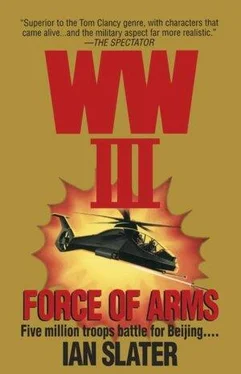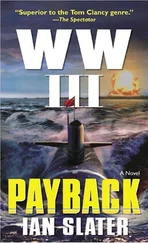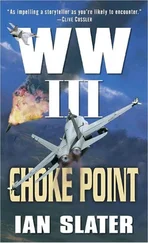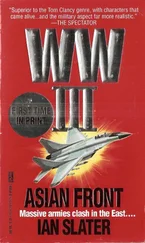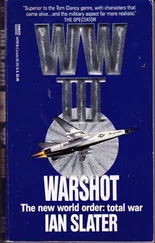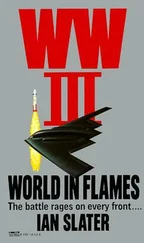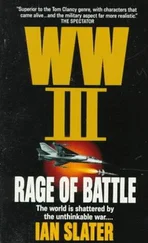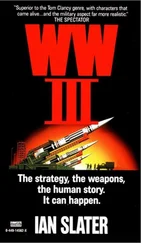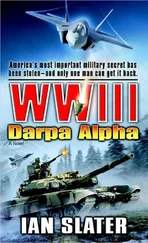* * *
In revetment areas all along the trace, Cheng ordered his tanks to stay dug in, in hull-down defilade position wherever they were, and to ready themselves to lay down an artillery barrage before the first wave of troops began to cross the truce line.
* * *
“I believe,” Freeman said, his knuckles now supporting his weight over the table map of Beijing and environs, “that Cheng is going to attack.”
“In a typhoon?” an incredulous Norton asked.
“In a typhoon,” Freeman responded, a note of urgency in his voice. “Norton, I want you to encode for the tanks— withdraw a hundred yards from the trace and dig in.”
The general saw Harvey Simmet looking at him worriedly. “Well,” Freeman said by way of explanation, “you’re telling me, Harvey, that it’s going to rain buckets for a while, aren’t you?”
“Yes, sir.”
“Then I don’t want my tanks bogged down and vulnerable. This way only their main guns will show.”
And the main guns of the hunkered down M1A1s were just visible, but ample reference points for Cheng’s fifty East Wind one-man hovercrafts. Actually they were three-man hovercrafts of the same arrowhead shape that Freeman had used on Lake Baikal, the sharp, streamlined, fifteen-foot-long, six-foot-waisted wooden hulls, with an eight-inch skirting below, driven by a ten-horsepower, four-cycle vertical shaft mower engine that moved the hovercrafts across sand, mud, or water between forty-seven and fifty-five miles per hour. It was based very much on the early UP design series of hovercraft in the United States.
The early winds of the typhoon were now gusting at fifty miles per hour, giving the East Winds an additional fifteen miles per hour so that some of the hovercrafts actually had to brake hard, by deceleration and tail flap, in order to maintain stability at around fifty to sixty miles per hour. The space in the cockpit behind the perspex windshield usually occupied by two passengers either side of the driver was now packed with two hundred pounds of TNT and jelled high octane, a napalmlike explosive mix that if it hit the M1 tanks would kill them by incinerating the tank crew.
In the slashing rain and wind-driven squalls of rock and sand on this, me outermost fringes of the Gobi, the laser range finders of the M1A1’s became segmented by airborne debris. As a result, the rounds fired by the Americans at the small, fast hovercrafts fell long or short or even wide of their targets.
The constantly fast weaving and jinxing of the sharp-bowed hovercrafts, looking no bigger than wedges of cake at two hundred yards if you could see them, made direct hits against them by the M1A1s virtually impossible, and within four minutes of the swarm of fifty hovercraft shooting across, indeed skimming across, the mine field, only one lost power at this critical juncture. Nose-diving hard into the typhoon-whipped earth, its nose detonator exploding instantly, the heat and enormous concussion of the huge, two-hundred-foot-wide napalm fireball took out another three hovercrafts that had been running more or less together across the mine field — the sudden overpressure exploding several more mines.
“Jesus!” Lieutenant Roper said. “Fire into—” Instead of finishing his order he used the gunner’s override and pressed the button himself, blowing up some mines, but by now most of the hovercrafts were across the DMZ, racing toward the tanks. The tanks’ main gun depression at ten degrees was better than that of most main battle tanks, but Roper and every other tank crewman knew at some point they could depress the gun no lower.
“Machine guns!” Roper yelled over the radio. “And break out for maneuver. Now!”
In the swirling maelstrom of the withdrawal and now the deluge of rain, tracks spun and slewed but still gripped hard enough to back out of their stationary hunkered down position atop the ridge as tank commanders and gunners flipped open the cupolas, the Browning.50 and 7.62mm machine guns respectively in the Israeli position, that is, the commanders’ heads were visible above the cupola and would have made perfect targets for the hovercrafts had the latter been fitted out with machine guns themselves. But they were not, the hovercrafts’ only defense, though a considerable one, their bobbing and weaving motion with only two hundred yards to go. Only Roper and a few other echelon commanders had guessed the truth — that the mini Chinese hovercrafts were kamikazes.
In the fury of the storm, the acrid stench of cordite filled the air with wet dust, and four other hovercraft disintegrated, vaporized by their own napalm hit by a.50mm Browning on whose belt every fifth shell was a tracer. Then without the wind increasing, its wild banshee sound was punctuated by the staccato sound of machine guns, but the forty-two remaining hovercraft were on the tanks, slamming into them at fifty miles per hour plus, the Americans screaming as each fireball engulfed their tank, the tank exploding in mustard-colored eruptions of earth and two hundred pounds of TNT and jelled gasoline.
Out of forty-two suicide hovercrafts that hit, only two failed to explode, but that left forty tanks—160 Americans, the latter no more than charred corpses, their ID tags melted in the furious heat of the fireballs, the burned and sweetish stench of their bodies blown westward by the typhoon’s ferocious wind.
Now Cheng ordered three armies, the Sixty-third, Twenty-seventh, and Sixty-ninth, originally from the Beijing area, to swarm across the trace. Chinese T-59s amassed during the storm provided covering fire, first to clear a path through the minefields and then firing to create a creeping barrage under which the three armies — over ninety thousand men — advanced on the American lines, overwhelming the American defenders who of necessity had been spread too thinly out along the trace, the sudden Chinese attack creating a huge bulge in the right side of the check mark-shaped front. And into the bulge Cheng poured as much armor as he could possibly expend, most of this being the light, eighteen-ton amphibious type-60 tank, its main gun an 85mm. Weighing three and a half times less than the 63-ton M1A1, it presented a mobility in the water that the M1A1 did not have. But here, a hundred miles northeast of Orgon Tal, the bulge met no American armor, most of it being collected around Orgon Tal for what had been Freeman’s grand plan of a dash south to the city.
Behind the T-60s, in reality in large Soviet PT-76s that had been used to good account earlier in the war against Freeman, thousands of PLA regular frontline troops moved like so many ants through the downpour of the typhoon, which did not inhibit the amphibious T-60s but hindered the retreating Americans who, devoid of tanks to protect them in this sector, relied on the lightly protected Bradley fighting vehicle. However, the Bradley’s superb mobility and speed of forty-one miles per hour was reduced by the typhoon’s headwinds, and once again targeting via laser became obscured by airborne debris.
Worst of all for the Americans was the fact that their TACAIR was grounded, the only aircraft venturing forth being a squadron of A-10 Thunderbolt IIs, or “tank busters,” as they were affectionately known after their brilliant performance in the Iraqi desert. But despite the bravery of the pilots in flying down into the typhoon, they could not shoot at what neither they nor their infrared goggles could see properly. In any case by now the ground troops of the two sides were engaged in hand-to-hand fighting, and no satisfactory ID of friend or foe could be made from the air.
* * *
“For God’s sake!” Freeman thundered. “When is this weather going to lift, Harvey?”
Because of the general’s tone, Harvey felt personally responsible for the typhoon.
Читать дальше
